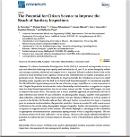| dc.contributor.author | Jo, Herschan | |
| dc.contributor.author | Richard, King | |
| dc.contributor.author | Theresa, Mkandawire | |
| dc.contributor.author | Kenan, Okurut | |
| dc.contributor.author | Dan, J. Lapworth | |
| dc.contributor.author | Rosalind, Malcolm | |
| dc.contributor.author | Katherine, Pond | |
| dc.date.accessioned | 2023-10-16T11:00:01Z | |
| dc.date.available | 2023-10-16T11:00:01Z | |
| dc.date.issued | 2020-10 | |
| dc.identifier.citation | Herschan, J., King, R., Mkandawire, T., Okurut, K., Lapworth, D. J., Malcolm, R., & Pond, K. (2020). The potential for citizen science to improve the reach of sanitary inspections. Resources, 9(12), 142. | en_US |
| dc.identifier.uri | doi:10.3390/resources9120142 | |
| dc.identifier.uri | https://hdl.handle.net/20.500.12504/1455 | |
| dc.description.abstract | To achieve Sustainable Development Goals (SDGs) 6, universal and equitable access to
safe and affordable drinking-water quality and sanitation for all, and 10, to reduce inequality within
and among countries, additional and urgent work is required. Efforts to achieve these Goals in the
context of small drinking-water supplies, which are the furthest behind in regards to progress, are of
particular need. Reasons for this disparity in progress include the remoteness of access to small
drinking-water supplies and the lack of technical and financial capacity for monitoring supplies.
The World Health Organization promote the use of Sanitary inspection (SI) as an on-site assessment of
risk. Despite the potential to increase the body of knowledge and information on supplies in a region,
there has been limited research into the role of citizen science and SIs. To meet SDG targets, we need
to improve the reach of SIs. This study uses a mixed methods approach of quantitative on-site SI
data collection and remote SI data collection via photographic images, together with qualitative
data collection, collected by non-expert students, who are citizens of Malawi, as well as a panel of
experts in the field of SI. Results indicate that, although further research into the topic is required
prior to widescale implementation, the potential exists for citizens to conduct SI, with remote expert
verification of the results using photographic images of supplies. Further documentation or guidance
is required to support citizens in this process. The results highlight a critical gap in the availability
of appropriate documentation for unprotected spring sources which is urgently required. The use
of citizen science for SI data collection is in its infancy. However, this study indicates that there is
potential to explore the use of citizen science in this area, which will contribute to achieving SDGs 6
and 10. | en_US |
| dc.language.iso | en | en_US |
| dc.publisher | MDPI- Resources | en_US |
| dc.subject | Citizen science | en_US |
| dc.subject | Drinking-water quality | en_US |
| dc.subject | Photographic sanitary inspection | en_US |
| dc.subject | Remote sanitary inspection | en_US |
| dc.subject | Risk assessment and management | en_US |
| dc.title | The potential for citizen science to improve the reach of sanitary inspections | en_US |
| dc.type | Article | en_US |

